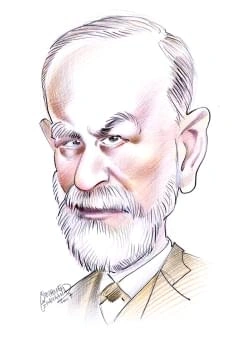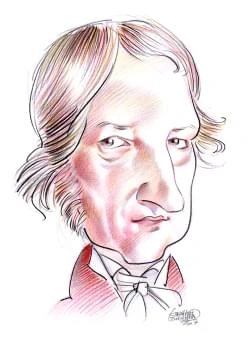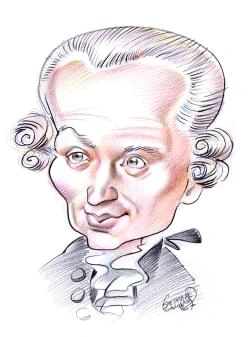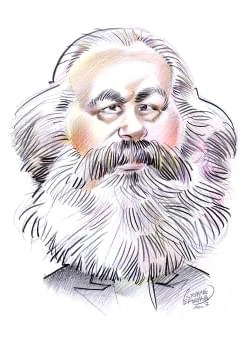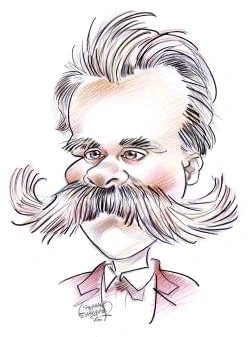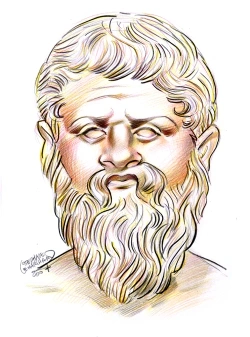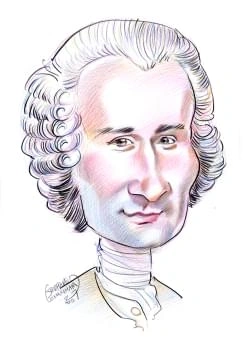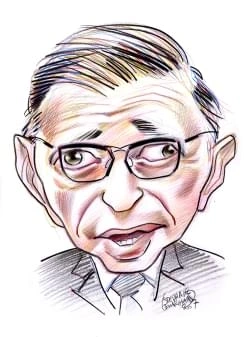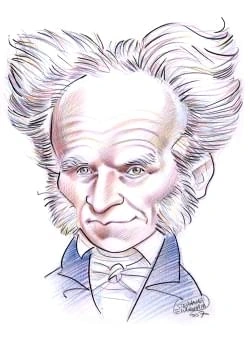27 résultats pour "poetica"
- Poética - filosofia.
-
Geoffrey Chaucer
I
INTRODUCTION
Geoffrey Chaucer
Fourteenth-century English poet and public servant Geoffrey Chaucer wrote verse renowned for its humor, understanding
of human character, and innovations in poetic vocabulary and meter.
Tale of the Wife of BathThe Canterbury Tales by English poet Geoffrey Chaucer contains 22 verse tales and 2 prose tales presumably told bypilgrims to pass the time on their way to visit a shrine in Canterbury, England. An excerpt from the tale of the Wife ofBath is heard here. The wife relates that she has been married and widowed five times but the church has recognized onlyone marriage. You can follow the Middle English text and modern translation as you listen to the audio excerpt.The Wife of...
-
Japanese Literature
I
INTRODUCTION
Japanese Literature, literature of Japan, in written form from at least the 8th century
AD
to the present.
The Man’yō’sh ū contains about 4,500 poems, most of them composed in the Nara period (710-784). Some of the poems are far older, however, and some of the verses date to earlier collections that have not survived. The work demonstrates a gradual change from basic verses on simple subjects to more sophisticated expressions with a broad range of subject matter. This text also shows the development of poetic forms such as the tanka (short poem), a form structured around alternating lines of 5 an...
-
Bible.
collection of many different books. The Old Testament is by no means a unified book in terms of authorship, date of composition, or literary type; it is instead a veritablelibrary. Generally speaking, the books of the Old Testament and their component parts may be identified as narratives, poetic works, prophetic works, law, or apocalypses.Most of these are broad categories that include various distinct types or genres of literature and oral tradition. None of these categories is limited to the...
-
American Literature: Poetry
I
INTRODUCTION
Phyllis McGinley
American poet and author Phyllis McGinley composed light, witty verse, much of which deals with family life.
Taylor, a poet of great technical skill, wrote powerful meditative poems in which he tested himself morally and sought to identify and root out sinful tendencies. In“God's Determinations Touching His Elect” (written 1680?), one of Taylor’s most important works, he celebrates God's power in the triumph of good over evil in thehuman soul. All of Taylor’s poetry and much of Bradstreet’s served generally personal ends, and their audience often consisted of themselves and their family andclosest frie...
-
Tragedy
I
INTRODUCTION
Euripides
Unlike other 5th-century BC Greek playwrights, tragic poet Euripides addressed the plight of the common people, rather
than that of mythic heroes.
SenecaSeneca was a Roman philosopher, dramatist, and statesman. His tragedies later influenced Renaissance dramatists,including William Shakespeare. The bust of Seneca shown here is a Roman copy of a Greek original.Art Resource, NY Aeschylus is one of the best known of the ancient Greek tragic playwrights. The author of some 90 plays, he established many of the conventions of the tragic dramaticform, which he perfected throughout his career. Aeschylus's skillful use of poetic language and brilli...
-
résumé El Burlador de Sevilla y el convidado de piedra
Ruben Dario, famoso poetas nicaragüense nace en la ciudad de Metapa el 10 de Enero de 1867. Es famoso por algunas de sus obras poéticas tal como «Azul», «Cantos de vida y esperanza» y también «prosas profanas» reflejos del Modernismo. En efecto, el poeta Ruben Dario es famoso sobretodo por ser el padre fundador del Modernismo que caracteriza la poesía latinoamericana a finales del siglo XIX y principios de XX La poesía de Ruben Dario es...
-
Poetica licentia
Poetica licentia Une licence poétique Cette locution, présente dans toutes les langues européennes, faisait partie du vocabulaire technique en latin classique et désignait des expressions poétiques hasardeuses, soit en raison de leur tournure gramm aticale (cf. notamment Macrobe, Commentaire sur le Songe de Scipion, 2, 8, 5), soit en raison de leur tournure sém antique (cf. notam ment Sénèque [Natura/es quaestiones, 2, 44, 1] ; Quintilien [2, 4, 3 ; 2, 4, 19; 4, 1, 58]), soit en raiso...
-
-
Poesía - lengua y litteratura.
poesía. Ejemplos como Gabriel Miró (“Comienza el color en la raya del mar. Amanece en las aguas un huerto de granados, de naranjos, de cidros”, Años y leguas ), Luis Martín Santos en Tiempo de silencio, Julio Cortázar en Rayuela, José Lezama Lima o el propio Cabrera Infante, bastarían para demostrar que cuando la prosa es buena no se aparta del quehacer poético en sentido amplio. 4 TIPOS DE POESÍA La condensación, una marcada tendencia al uso de imágenes y un fuerte componente emotivo y se...
-
Arabic Literature
I
INTRODUCTION
Arabic Literature, literature written in the Arabic language, from the 6th century to the present.
The life of the Prophet Muhammad also generated its own literary sources, primary among which is the hadith. The hadiths were a collection of the Prophet's sayings and actions, transmitted through a chain of authorities said to go back to Muhammad himself. The two most famous collections of hadiths are those of al-Bukhari andMuslim in the 9th century. These works provide a wealth of information covering all aspects of a Muslim's life, from prayer to personal, social, and business conduct. The...
-
Poetry
I
INTRODUCTION
Phyllis McGinley
American poet and author Phyllis McGinley composed light, witty verse, much of which deals with family life.
repetition of certain lines and the rhyming of certain lines. The Provençal sestina features a set of six words that end lines (end-words), repeated in a dizzyingly complexpattern. The range of effects created by the poetic line varies tremendously depending on its length, its patterns of repetition, and whether the sentence stops at the end of theline (end-stopped) or carries over the end of the line (enjambed). Many of the earliest examples of Old English poetry feature an accentual line with...
-
John Milton
I
INTRODUCTION
John Milton
Seventeenth-century writer John Milton ranks as one of the greatest poets in the history of English literature.
liberty to know, to utter, and to argue freely according to conscience, above all liberties.” In Of Education (1644) Milton advocated an education combining classical instruction, to prepare the student for government service, with religious training. The third group of pamphlets includes those Milton wrote to justify the execution of Charles I. The first of these, The Tenure of Kings and Magistrates (1649), deals with constitutional questions and particularly with the rights of the people a...
-
Richard Wagner.
which took place in August 1876. Wagner completed his final opera, Parsifal (which he called a 'festival drama of dedication' for the Festspielhaus), in 1882, and it premiered that July. In September Wagner moved to Venice, where in February 1883, after a heated argument with Cosima, he suffered a fatal heart attack. He was buried in Bayreuth. III MUSIC AND THOUGHT In the early 19th century, an opera was structured as a succession of conventional self-contained forms such as aria (a vocal so...
-
Canadian Literature
I
INTRODUCTION
Canadian Literature, literature of the peoples of Canada.
William Henry DrummondPoet William Henry Drummond described the lives of French Canadian farmers, loggers, and rural workers in verse thatreflected their mix of French and English speech. He gained recognition in the late 19th and early 20th centuries.Library of Congress In the early 19th century, most Canadian poetry imitated earlier British poetry. Poets Oliver Goldsmith (grandnephew of the Anglo-Irish writer of the same name),Charles Sangster, Charles Mair, and Levi Adams exemplified literary...
-
Literary Criticism
I
INTRODUCTION
Literary Criticism, discussion of literature, including description, analysis, interpretation, and evaluation of literary works.
IV THE 17TH AND 18TH CENTURIES The climate of criticism changed with the arrival on the literary scene of such giants as Miguel de Cervantes, Lope de Vega, and Pedro Calderòn in Spain; WilliamShakespeare, Ben Jonson, and John Milton in England; and Pierre Corneille, Jean Baptiste Racine, and Molière in France. Most of these writers specialized or excelled indrama, and consequently the so-called battle of the ancients and moderns—the critical comparison of Greek and Roman authors with more rece...
-
Bachelard, Gaston (en anglais)
understanding not only his own work, but also that of Althusser and the followers of Lacan . In France, Bachelard has been criticized by postmodernists for remaining faithful to some of the methods of critical philosophy, and by Marxists for his humanism. His works on poetics inspired many of the French New Critics (see French philosophy of science §§1-2 ). 2 The new scientific spirit To have taught science in the early part of the twentieth century is to have experienced dramatic ch...
-
-
Jean-Louis Haquette – L’écriture de la nature au tournant du
Il poema a cui si riferisce l'articolo era stato tradotto in francese da Marie-Jeanne Bontemps, che traspose in una prosa poetica ed eloquente – altro genere in voga nella Francia dell'epoca – la poesia di Thomson. Introducendo la sua opera di traduzione, la Bontemps definisce l'autore «aussi bon physicien que peintre habile».[5] Dunque accanto alla figura del divulgatore scientifico, appare quella dell'autore che con la forza della sua immaginazione descrive lo spettacolo della natura, che c...
-
Word & Image
A Journal of Verbal/Visual Enquiry
ISSN: 0266-6286 (Print) 1943-2178 (Online) Journal homepage: https://www.
Reception and interference: reading Jean Molinet's rebus-poems ADRIAN ARMSTRONG Northern French culture in the late Middle Ages is marked not only by a proliferation of visual images, but also by the knowledge which these images convey, velY often in the form of figurative discourse. Traditional coded or symbolic visual fornls include heraldly, where tinctures and charges often accumulate particular connotations, and typological staine...
-
Baudelaire - L'ALBATROS
voyaguerailé devient le poète, les hommes d'équipage, la foule et les planches, le théâtre social.2) Les thèmes du poèteLa verticalité, l'aspect aérien: L'albatros est évoqué dans toute sa grandeur comme le confirmel'enjambement des vers 1 et 2 qui suggère l'immensité des espaces que l'albatros à parcourir. Cettenotino de grands espaces est renforcée par l'hypallage du vers 2 (“vaste oiseau des mers” = oiseaudes vastes mers). L'aspect sublime: Au-dessus de l'horizontalité mediocr...
-
Richard Wagner
I
INTRODUCTION
Richard Wagner (1813-1883), German composer, conductor, and essayist, one of the most influential cultural figures of the 19th century.
May 1864 he was summoned to Munich by the 18-year-old King Ludwig II of Bavaria, who settled Wagner's debts, paid him a generous allowance, and provided himwith housing. Wagner was soon joined in his new home by Cosima von Bülow, Liszt’s daughter and the wife of German conductor and pianist Hans von Bülow. Wagnerand Cosima began a relationship that produced three children before the dissolution of the Bülows' marriage in 1870. Mounting hostility toward Wagner by members ofLudwig’s court resulted...
-
20. Laudator temporis acti
Un panégyriste du temps passé
Cette expression célèbre provient de l'Ars poetica d'Horace, qui, aux
vers...
20. Laudator temporis acti Un panégyriste du temps passé Cette expression célèbre provient de l'Ars poetica d'Horace, qui, aux vers 174 et suivants, qualifie en ces te1111es un vieux grincheux : Difficilis, querulus, laudator temporis acti Ise puero, castigator cen sorque minorom, >; Aristote, dans la Rhétorique, évoquait déjà ces hommes qui préfèrent vivre dans le passé plutôt que de se tourner vers l'avenir, et > , 6LaTeÀoûat yàp Tà yev6µEva ÀÉyovTe� (1390a 10 sq.). Le distique d'Horace est...
-
English Literature
I
INTRODUCTION
English Literature, literature produced in England, from the introduction of Old English by the Anglo-Saxons in the 5th century to the present.
evident. That feature is typical of other Old English literature, for almost all of what survives was preserved by monastic copyists. Most of it was actually composed byreligious writers after the early conversion of the people from their faith in the older Germanic divinities. Sacred legend and story were reduced to verse in poems resembling Beowulf in form. At first such verse was rendered in the somewhat simple, stark style of the poems of Caedmon, a humble man of the late 7th century who w...
-
Modernizacao teatro europeu
2 Na França, o escritor naturalista Émile Zola começou a luta pela renovação dramatúrgica já na década de 1870, fazendo a crítica da artificialidade da “peça benfeita”. Ele queria que o teatro mostrasse a vida como ela é. Com sua brutalidade, com assuntos polêmicos, com personagens que fossem copiadas da vida real e que assim se mostrassem em cena. Sua prática teatral, porém, ficou aquém do pensamento. Suas ideias frutificaram na década seguinte, segundo Eric Bentley, “quando Henry Bec...
-
Literatura española - lengua y litteratura.
Antonio de Nebrija, autor de la Gramática de la lengua castellana (1492). En este periodo cobró también forma definitiva la novela de caballerías española más famosa e imitada, el Amadís de Gaula (1508), publicándose posteriormente muchas novelas de caballerías a semejanza suya. Destacan en esta época otros nombres como Alfonso Martínez de Toledo, Arcipreste de Talavera, autor del Corbacho ; Diego de San Pedro y su Cárcel de amor, o el cronista Hernando del Pulgar. La Celestina o Tragic...
-
-
Homer
I
INTRODUCTION
Homer
According to tradition, the Greek poet Homer is believed to be the author of the Iliad and the Odyssey, two great epics of
ancient Greek literature.
The Return of OdysseusAfter the Greek warrior Odysseus returns from the Trojan War to his home in Ithaca, he kills the uninvited and unwantedsuitors of his wife, Penelope, who believed him to be dead. Odysseus’s astonishing skill with the bow convinces Penelopethat he is indeed her long-absent husband. This anonymous engraving is of an unknown date.Corbis The Odyssey narrates the return of the Greek hero Odysseus from the Trojan War. The opening scenes depict the disorder that has arisen in Ody...
-
Aristotle
I
INTRODUCTION
Aristotle (384-322
BC),
Greek philosopher and scientist, who shares with Plato and Socrates the distinction of being the most famous of ancient philosophers.
succession of individuals. These processes are therefore intermediate between the changeless circles of the heavens and the simple linear movements of the terrestrialelements. The species form a scale from simple (worms and flies at the bottom) to complex (human beings at the top), but evolution is not possible. C Aristotelian Psychology For Aristotle, psychology was a study of the soul. Insisting that form (the essence, or unchanging characteristic element in an object) and matter (the commonu...
-
Aristotle.
succession of individuals. These processes are therefore intermediate between the changeless circles of the heavens and the simple linear movements of the terrestrialelements. The species form a scale from simple (worms and flies at the bottom) to complex (human beings at the top), but evolution is not possible. C Aristotelian Psychology For Aristotle, psychology was a study of the soul. Insisting that form (the essence, or unchanging characteristic element in an object) and matter (the commonu...
}})
